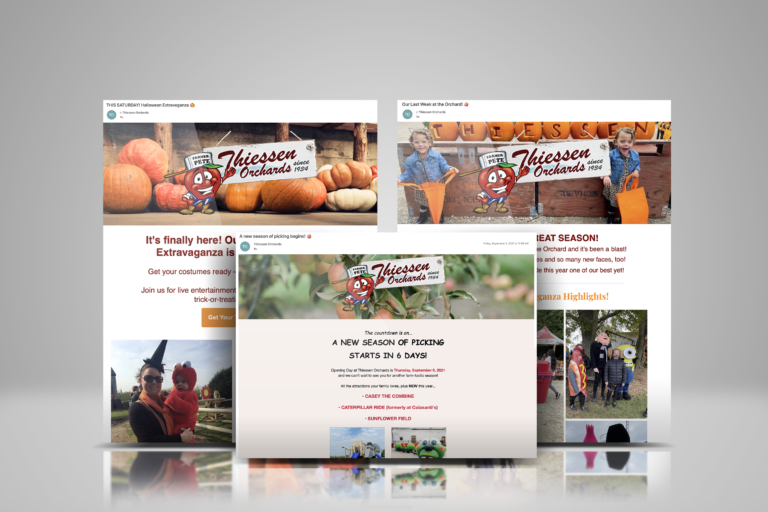
Do you have a list of email addresses from clients or customers that you are unsure what to do with?
One of the best ways to utilize this is by launching an email newsletter. Whether you send a newsletter to your list weekly, biweekly, or even monthly, newsletters are a great way to keep your customers engaged with your business, and they can also allow you to better connect with your target audience than on social media or other digital platforms.
While this might sound like a great idea, you may be wondering “Where do I start?” Well not to worry, as we have laid out the essential elements of a successful newsletter so you can start brainstorming!
A Strong Subject Line
When navigating their inbox, the first thing that a client will notice when stumbling upon your email is the subject line. If the subject line isn’t something that captivates the user or makes them intrigued to open the email, there’s a chance they’ll continue moving past it.
Therefore, it’s important to come up with a strong subject line to capture their attention. Here are some of our favourite ways to capture our audiences with the subject line:
- Ask a question: Identify a question that your audience may be wondering and include it in your subject line. This will spark your customers curiosity and entice them to open your email.
- Tie in an event or holiday: If you are a product or service brand, consider tying in your items with an upcoming holiday like Christmas, Mother’s Day, or Back-to-School. They will already be buying gifts for these holidays, so why not buy them from you?
- Include an offer: If you are planning to have a sale or are announcing a new product, consider teasing the offer in your headline to make your audience want to learn more.
It’s important to remember to make sure you are clear and concise with your subject line. You want to differentiate your newsletters from junk mail, so they aren’t skipped over or deleted.
TIP: Never use more than 2 or more punctuation marks in your subject line as multiple punctation marks raises your spam score. This includes periods, exclamation marks, or exclamation marks followed by a question mark.
Content That Is Relevant to Your Audience
Probably the most important part of your newsletter is the content inside. This content should be something your audience wants to learn more about.
Do you have a blog or podcast? Consider including your latest post or episode linked in your email to allow your audience to access it straight from their inbox. Do you have a bestselling product or service, or want to promote a product that’s underrated in your inventory? Consider adding a product or service spotlight to your email where your email list can learn more about the product.
You can also include content in these emails that are exclusive to your subscribers, such as early access to new products or services, or limited-time discounts. You can also take this concept and gear it more towards tips and information that your audience won’t find on other platforms.
So long as the content is something your audience will be interested in, it will entice them to keep reading.
A Visually Appealing Layout
Now that you know what you’re including in your email, it’s now time to decide how to include it in your email. As easy as it is to just type out text in an email and send it, having a visually appealing layout is another way to keep audiences engaged when reading your email. Consider adding headings, images, colourful borders, and interactive buttons within your newsletter to make the email more pleasing to the eye. It’s also important to keep the layout on brand with your other content. Make sure to utilize fonts, colours, and logos that are specific to your brand in your newsletter to make it more recognizable to your audience.
A Call-to-Action & Contact Info
So, your subscribers have read through all your email content. Now what?
Every newsletter needs to have some sort of call-to-action to tell readers what to do next. For example, if you are announcing to your email list that you are having a sale, provide them with a direct link to that sale so they can shop.
Another important call-to-action to include is your contact information. Whether that’s an email, phone number, website, or social media handle. These call-to-actions are great ways for your email list to find you on other platforms and have easy ways to reach you if they want to learn more or have questions. Call-to-actions and contact information give the audience the next step and allows them to take the information they learned and put it to good use.
And just like that, you have now created your first newsletter!
We recommend using platforms like MailChimp or Klaviyo to send these emails at an ideal time for your target audience. It’s also important to track open and click rates on all your newsletters, to see what elements of your newsletters are working, and which are not.
Looking for help to develop your email list or create newsletters? Contact the team at Southpoint Creative Group today and we would be happy to assist!
To get started, contact us now.
Until next time,
Team SCG

